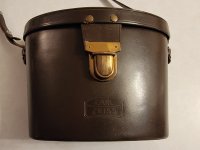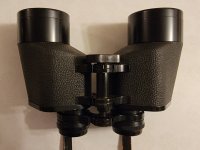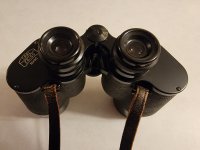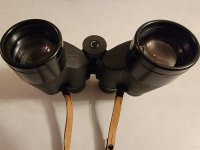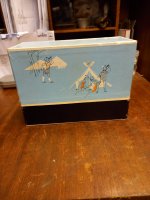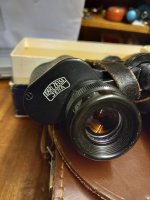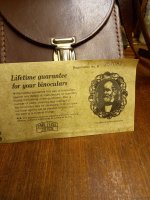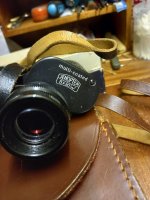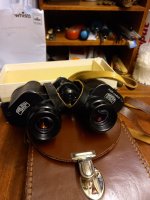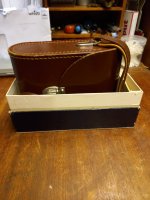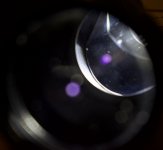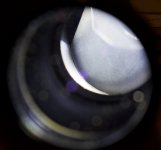-
Welcome to BirdForum, the internet's largest birding community with thousands of members from all over the world. The forums are dedicated to wild birds, birding, binoculars and equipment and all that goes with it.
Please register for an account to take part in the discussions in the forum, post your pictures in the gallery and more.
You are using an out of date browser. It may not display this or other websites correctly.
You should upgrade or use an alternative browser.
You should upgrade or use an alternative browser.
Age of my zeiss? (4 Viewers)
- Thread starter tealboy1
- Start date
More options
Who Replied?Hi,
well, images might have helped... obviously it must be Oberkochen, since Jena with 6 digit serial number means very old.
Here is an example of Zeiss West 10x50 from ebay which looks legit albeit a bit used... with a six digit number starting with 8...
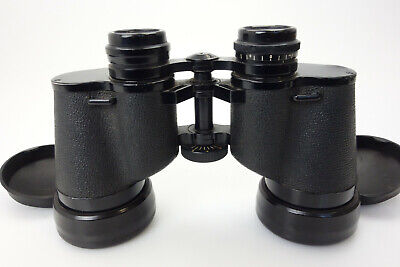
Joachim
well, images might have helped... obviously it must be Oberkochen, since Jena with 6 digit serial number means very old.
Here is an example of Zeiss West 10x50 from ebay which looks legit albeit a bit used... with a six digit number starting with 8...

Zeiss 10x50 Fernglas Binocular West Germany 848039 jk129 | eBay
Entdecken Sie Zeiss 10x50 Fernglas Binocular West Germany 848039 jk129 in der großen Auswahl bei eBay. Kostenlose Lieferung für viele Artikel!
www.ebay.de
Joachim
Joker9937
Well-known member
Good point!Hi,
well, images might have helped... obviously it must be Oberkochen, since Jena with 6 digit serial number means very old.
Here is an example of Zeiss West 10x50 from ebay which looks legit albeit a bit used... with a six digit number starting with 8...

Zeiss 10x50 Fernglas Binocular West Germany 848039 jk129 | eBay
Entdecken Sie Zeiss 10x50 Fernglas Binocular West Germany 848039 jk129 in der großen Auswahl bei eBay. Kostenlose Lieferung für viele Artikel!www.ebay.de
Joachim
My apologies for the no photos post. The only images were from the for sale ad, so I do not own them. I assumed that posting those photos would be taboo.
If it is ok, then I am happy to post them.
Regardless, thank you for the info. I am probably going to take a chance. The background info he gave seems to line up with what I would expect.
If I buy them, I will post photos.
Thank you again!
Hi,
yes, posting images from a sales ad is not a good idea... the link to the ad could mean unwanted competition of course.
As for Zeiss Oberkochen aka Zeiss West vs CZJ one should know that during the cold war there were two different optics companies called Zeiss... which competed fiercely in optics and in the courtroom...
CZJ is the one with the easy serial numbers counting up and also a public list available. If you see a CZJ model with a 6 digit serial number it has to be over 100 years old...
Zeiss West/Oberkochen does still have records for most models but they're not publicly available...
The Zeiss West 10x50 is a very nice pair of bins... among the best made by them...
Joachim
yes, posting images from a sales ad is not a good idea... the link to the ad could mean unwanted competition of course.
As for Zeiss Oberkochen aka Zeiss West vs CZJ one should know that during the cold war there were two different optics companies called Zeiss... which competed fiercely in optics and in the courtroom...
CZJ is the one with the easy serial numbers counting up and also a public list available. If you see a CZJ model with a 6 digit serial number it has to be over 100 years old...
Zeiss West/Oberkochen does still have records for most models but they're not publicly available...
The Zeiss West 10x50 is a very nice pair of bins... among the best made by them...
Joachim
Joker9937
Well-known member
Thanks! I took a chance. Hopefully, it is not a basket case. We will see in a few days.Hi,
yes, posting images from a sales ad is not a good idea... the link to the ad could mean unwanted competition of course.
As for Zeiss Oberkochen aka Zeiss West vs CZJ one should know that during the cold war there were two different optics companies called Zeiss... which competed fiercely in optics and in the courtroom...
CZJ is the one with the easy serial numbers counting up and also a public list available. If you see a CZJ model with a 6 digit serial number it has to be over 100 years old...
Zeiss West/Oberkochen does still have records for most models but they're not publicly available...
The Zeiss West 10x50 is a very nice pair of bins... among the best made by them...
Joachim
Joker9937
Well-known member
Arrived today. They look pretty cosmetically.
Very dim view, though. It appears they need serious cleaning internally. Can't tell by looking casually, but looking through them the image is very dim.
The focuser is a bit backlashy. Not sure if it needs serious attention. Seems to focus well after diopter is adjusted. Only tested indoors. Will test more outside.
Any idea on age? All links I had are broken. Serial number is 816981. Seller claimed his dad bought them at px while stationed in Germany in the 50s. ???
Very dim view, though. It appears they need serious cleaning internally. Can't tell by looking casually, but looking through them the image is very dim.
The focuser is a bit backlashy. Not sure if it needs serious attention. Seems to focus well after diopter is adjusted. Only tested indoors. Will test more outside.
Any idea on age? All links I had are broken. Serial number is 816981. Seller claimed his dad bought them at px while stationed in Germany in the 50s. ???
Attachments
I have a fair amount of time behind mine. Apologies for not chiming in earlier as although they are very good in many ways, there are also some significant negatives.
The good - beautifully made, excellent field of view, fairly compact for a 10x50. Great binocular to look at, if that matters to you, lots of history (what james holdsworth calls "Zeiss-ness"). NB. Focuser on mine is lighter than I would like but very positive, nothing I would describe as "backlashy" at all.
The not so good - both Oberkochen porros I own were hazed up inside (you will have found in your research that this is a not uncommon issue with Zeiss West porros, I'm sure) and required servicing, which in the case of the 10x50 took months, as even the skilled technician I sent them to advised me that he needed to proceed cautiously due to lack of spares. Even when cleaned, light transmission very poor by modern day standards thanks to 1950s era coatings, compounded by the complex optical design requiring a lot of surfaces to be so coated. Gijs van Ginkel on this site has measured one at only 60%. Both the 10x50 and 8x30 are very noticeably less bright than modern binoculars - which is not an issue for many types of observation, but unfortunately often is for mine. Other less serious negatives are the somewhat subdued colour rendition compared to modern binoculars, and a distinct falling off in performance as you get to the edge (this used to be less of an issue, but using a a flat field binocular a lot has made me increasingly less tolerant of poor edge performance), although the wide FOV helps compensate. Short eye relief is a real inconvenience, requiring me to remove my glasses/spectacles to use the binocular - (although I was aware of this beforehand, and having the binocular straight to your eyes also gives a more immersive view). I have found eye placement and positioning needs to be quite exact, more demanding than one might expect from a 5mm exit pupil.
Overall I find my 10x50 a real mixed bag of things I like and don't like. It does not have the optical performance I need for long distance spotting, but shorter distances, where the ability to pick out tiny specks isn't as essential, allow it to show its qualities and I've had some enjoyable days with it when I knew the birds were not going to fly too far. It's a pleasure to handle and to use, and I do still use it on occasion, but it's mainly a nostalgia piece now. How I wish it (and the 8x30/8x30B) had made it to the multi-coated era.
Do you still have the 8x30B and the 8x40 you posted about earlier in this thread?

The good - beautifully made, excellent field of view, fairly compact for a 10x50. Great binocular to look at, if that matters to you, lots of history (what james holdsworth calls "Zeiss-ness"). NB. Focuser on mine is lighter than I would like but very positive, nothing I would describe as "backlashy" at all.
The not so good - both Oberkochen porros I own were hazed up inside (you will have found in your research that this is a not uncommon issue with Zeiss West porros, I'm sure) and required servicing, which in the case of the 10x50 took months, as even the skilled technician I sent them to advised me that he needed to proceed cautiously due to lack of spares. Even when cleaned, light transmission very poor by modern day standards thanks to 1950s era coatings, compounded by the complex optical design requiring a lot of surfaces to be so coated. Gijs van Ginkel on this site has measured one at only 60%. Both the 10x50 and 8x30 are very noticeably less bright than modern binoculars - which is not an issue for many types of observation, but unfortunately often is for mine. Other less serious negatives are the somewhat subdued colour rendition compared to modern binoculars, and a distinct falling off in performance as you get to the edge (this used to be less of an issue, but using a a flat field binocular a lot has made me increasingly less tolerant of poor edge performance), although the wide FOV helps compensate. Short eye relief is a real inconvenience, requiring me to remove my glasses/spectacles to use the binocular - (although I was aware of this beforehand, and having the binocular straight to your eyes also gives a more immersive view). I have found eye placement and positioning needs to be quite exact, more demanding than one might expect from a 5mm exit pupil.
Overall I find my 10x50 a real mixed bag of things I like and don't like. It does not have the optical performance I need for long distance spotting, but shorter distances, where the ability to pick out tiny specks isn't as essential, allow it to show its qualities and I've had some enjoyable days with it when I knew the birds were not going to fly too far. It's a pleasure to handle and to use, and I do still use it on occasion, but it's mainly a nostalgia piece now. How I wish it (and the 8x30/8x30B) had made it to the multi-coated era.
Do you still have the 8x30B and the 8x40 you posted about earlier in this thread?
Joker9937
Well-known member
Hello! No apology necessary. None at all.I have a fair amount of time behind mine. Apologies for not chiming in earlier as although they are very good in many ways, there are also some significant negatives.
The good - beautifully made, excellent field of view, fairly compact for a 10x50. Great binocular to look at, if that matters to you, lots of history (what james holdsworth calls "Zeiss-ness"). NB. Focuser on mine is lighter than I would like but very positive, nothing I would describe as "backlashy" at all.
The not so good - both Oberkochen porros I own were hazed up inside (you will have found in your research that this is a not uncommon issue with Zeiss West porros, I'm sure) and required servicing, which in the case of the 10x50 took months, as even the skilled technician I sent them to advised me that he needed to proceed cautiously due to lack of spares. Even when cleaned, light transmission very poor by modern day standards thanks to 1950s era coatings, compounded by the complex optical design requiring a lot of surfaces to be so coated. Gijs van Ginkel on this site has measured one at only 60%. Both the 10x50 and 8x30 are very noticeably less bright than modern binoculars - which is not an issue for many types of observation, but unfortunately often is for mine. Other less serious negatives are the somewhat subdued colour rendition compared to modern binoculars, and a distinct falling off in performance as you get to the edge (this used to be less of an issue, but using a a flat field binocular a lot has made me increasingly less tolerant of poor edge performance), although the wide FOV helps compensate. Short eye relief is a real inconvenience, requiring me to remove my glasses/spectacles to use the binocular - (although I was aware of this beforehand, and having the binocular straight to your eyes also gives a more immersive view). I have found eye placement and positioning needs to be quite exact, more demanding than one might expect from a 5mm exit pupil.
Overall I find my 10x50 a real mixed bag of things I like and don't like. It does not have the optical performance I need for long distance spotting, but shorter distances, where the ability to pick out tiny specks isn't as essential, allow it to show its qualities and I've had some enjoyable days with it when I knew the birds were not going to fly too far. It's a pleasure to handle and to use, and I do still use it on occasion, but it's mainly a nostalgia piece now. How I wish it (and the 8x30/8x30B) had made it to the multi-coated era.
Do you still have the 8x30B and the 8x40 you posted about earlier in this thread?
Thank you for your input and observations. For the most part, with the little bit of use so far, I concur.
I am not sure how quickly it will happen, but I am quite certain I will be sending them out for servicing. Once I decide if I am keeping them, I will make that decision. But, the experiences with them so far, they deserve the attention. They have nice potential, knowing their limitations, I think it will be rewarding.
The "backlashy" description is probably less than accurate. It is more like a looseness. However, the more I use it the less I notice it. So, it might be something that I just need to get used to. The focus well, and are very pleasant.
For 10x binos, they seem to be easy to hand hold. They are comfortable, and the views are quite appealing to me. I do notice the drop off as you get closer to the edge of the view. However, they are otherwise quite sweet, in my opinion.
Actually, both of the previous Zeiss are gone. The 8x30B was uncomfortable to my face. As weird as that sounds, the eyecups hit my nose, due to my narrow IPD. So, sadly, they were sold. The 8x40 was included in a "lot" of binos that I sold to generate some cash for another purchase. I do not really regret the 8x40, but do miss the 8x30B.
Since then, I have really slowed my purchases. LOL. So far, though, I really like the 10x50s.
Hi, I'm looking at a pair of Zeiss Jena binoculars. Can anyone tell if they are genuine and when they were manufactured.
Attachments
electrician58
New member

Please sir, my sn 2470 on model 95 zeiss binocular.Serial numbers for Zeiss binoculars are not consecutive. There are also different ranges of numbers for various products.
If you give me the serial number I will look it up for you.
tenex
reality-based
What is the source of this "common" haze? I had my father's 10x50 (from early 1960s I think) for about 30 years and never saw this develop.both Oberkochen porros I own were hazed up inside
2470 seems to be an incomplete number.
Photos would help.
The source of haze is moisture.
It depends on storage conditions and use in humid weather.
Also how well sealed each individual binocular is when made and maybe the amount of moisture in the air when made.
It may also be due to grease or paint internally that outgasses.
I have had many binoculars with haze, but also many without.
The two problems I look for are haze/fungus and poor collimation.
With these checked, then other functions are checked.
Regards,
B.
Photos would help.
The source of haze is moisture.
It depends on storage conditions and use in humid weather.
Also how well sealed each individual binocular is when made and maybe the amount of moisture in the air when made.
It may also be due to grease or paint internally that outgasses.
I have had many binoculars with haze, but also many without.
The two problems I look for are haze/fungus and poor collimation.
With these checked, then other functions are checked.
Regards,
B.
henry link
Well-known member
The left photo below shows the interior of a 10x50 Oberkochen that was professionally cleaned about 5 years years ago. The light source is from a flashlight shining through the eyepiece from the upper right.What is the source of this "common" haze? I had my father's 10x50 (from early 1960s I think) for about 30 years and never saw this develop.
The right photo shows the same view through an 8x50 B I bought a couple of years ago and haven't had cleaned yet. The binocular looks brand new. I don't think it has been out of its case more than a few times. Looking casually into the objective lens you might not notice that the outsides of the reflective faces of the prisms are thoroughly coated with a hazy film revealed by the flashlight, I think probably from evaporated lubricant.
Attachments
Last edited:
There was a similar problem with Canon, Minolta and other Japanese SLR camera lenses pre about 1967.
The grease got onto the iris blades, which became slow and eventually impossible to operate.
So the exposures are badly wrong.
The grease was changed and later camera lenses have much better iris blade operation.
The Zeiss Ikon lenses on Voigtlander cameras from the 1950s and 1960s had faulty cement.
Many of these cameras have almost worthless lenses as the cemented surfaces have failed badly.
Regards,
B.
The grease got onto the iris blades, which became slow and eventually impossible to operate.
So the exposures are badly wrong.
The grease was changed and later camera lenses have much better iris blade operation.
The Zeiss Ikon lenses on Voigtlander cameras from the 1950s and 1960s had faulty cement.
Many of these cameras have almost worthless lenses as the cemented surfaces have failed badly.
Regards,
B.
Similar threads
- Replies
- 41
- Views
- 5K
Users who are viewing this thread
Total: 5 (members: 0, guests: 5)




